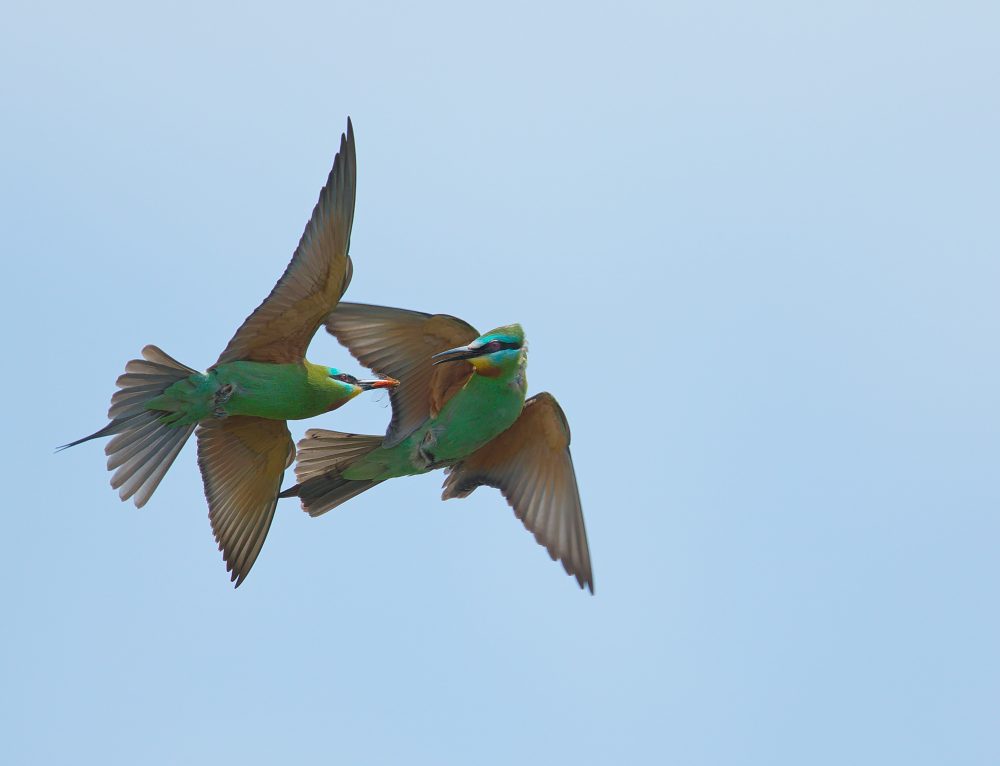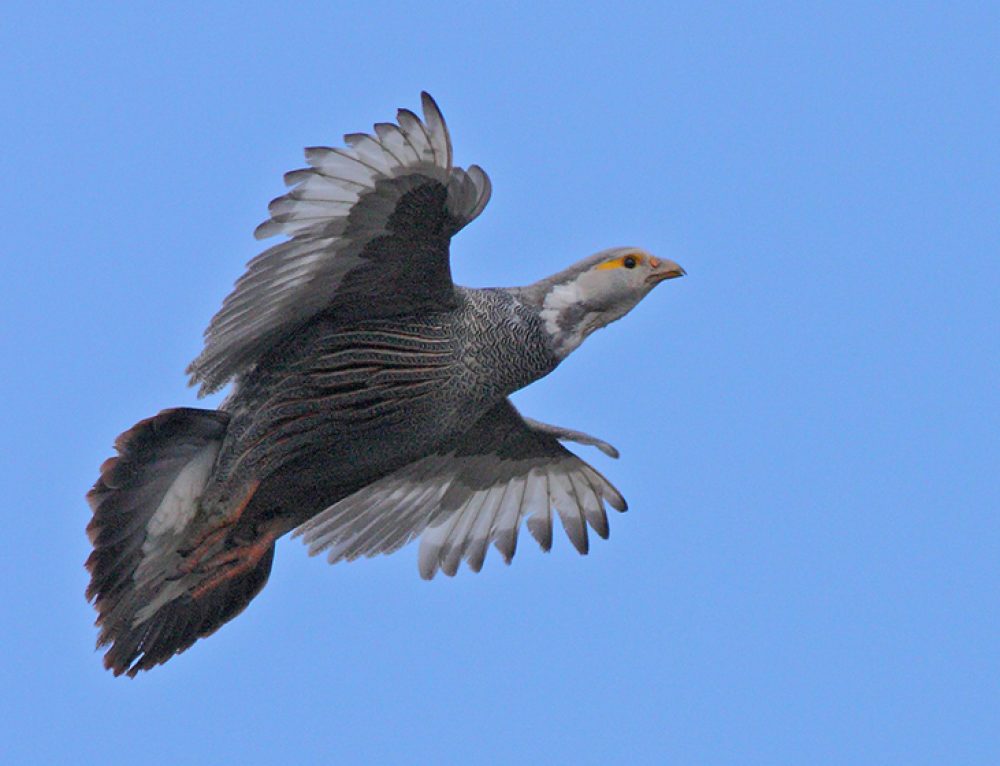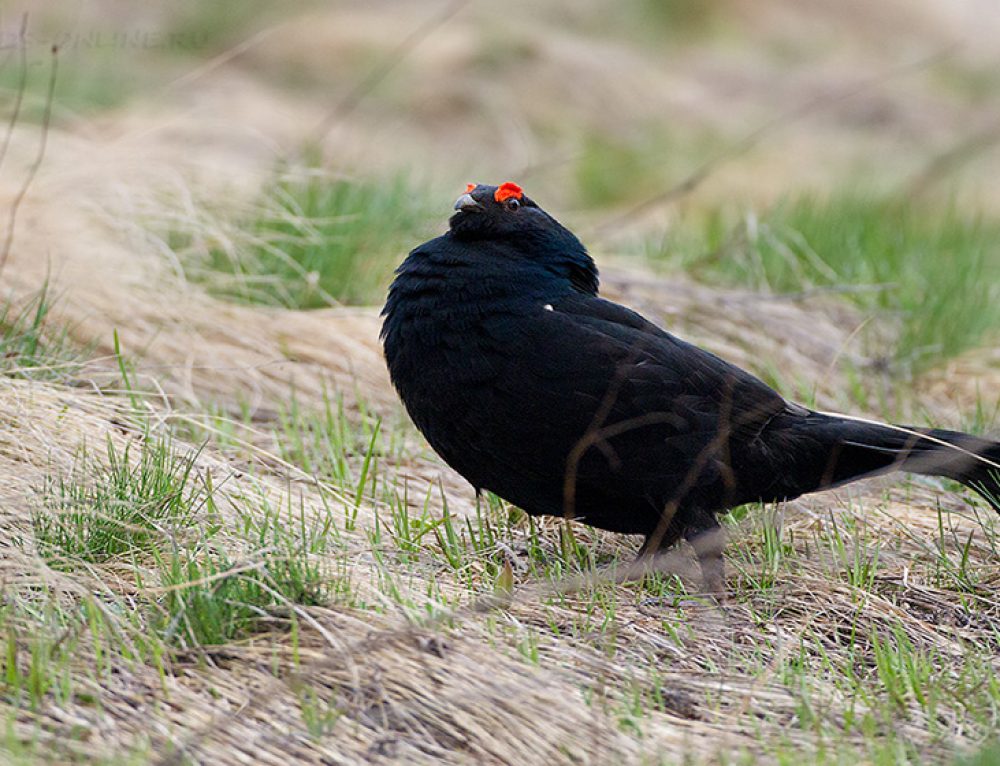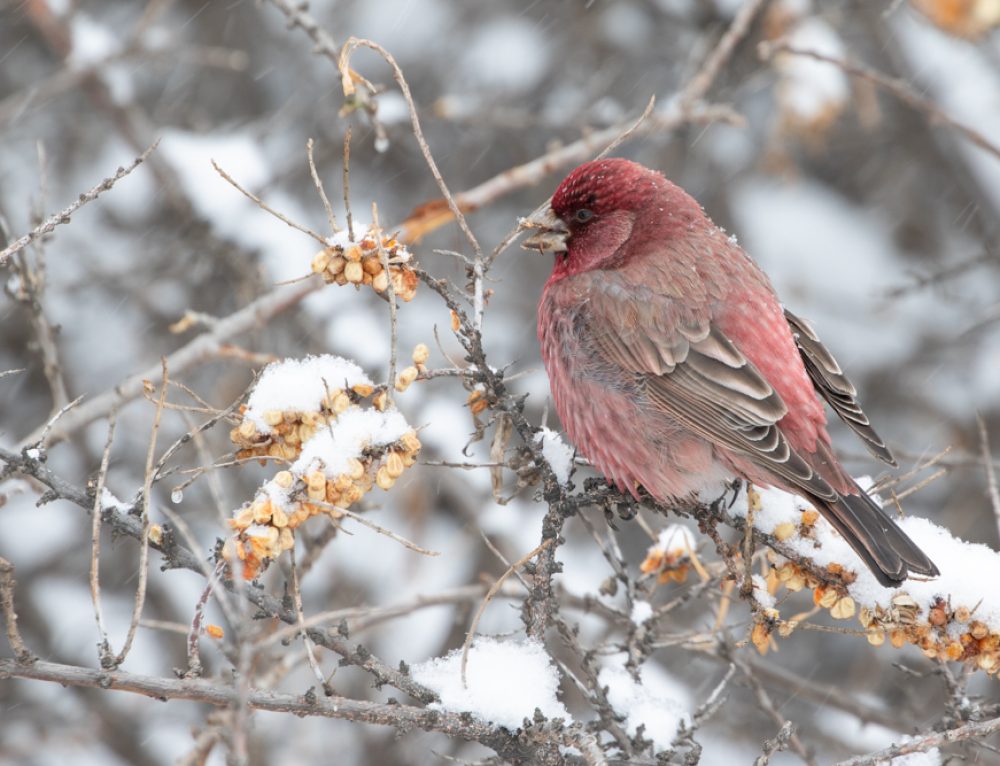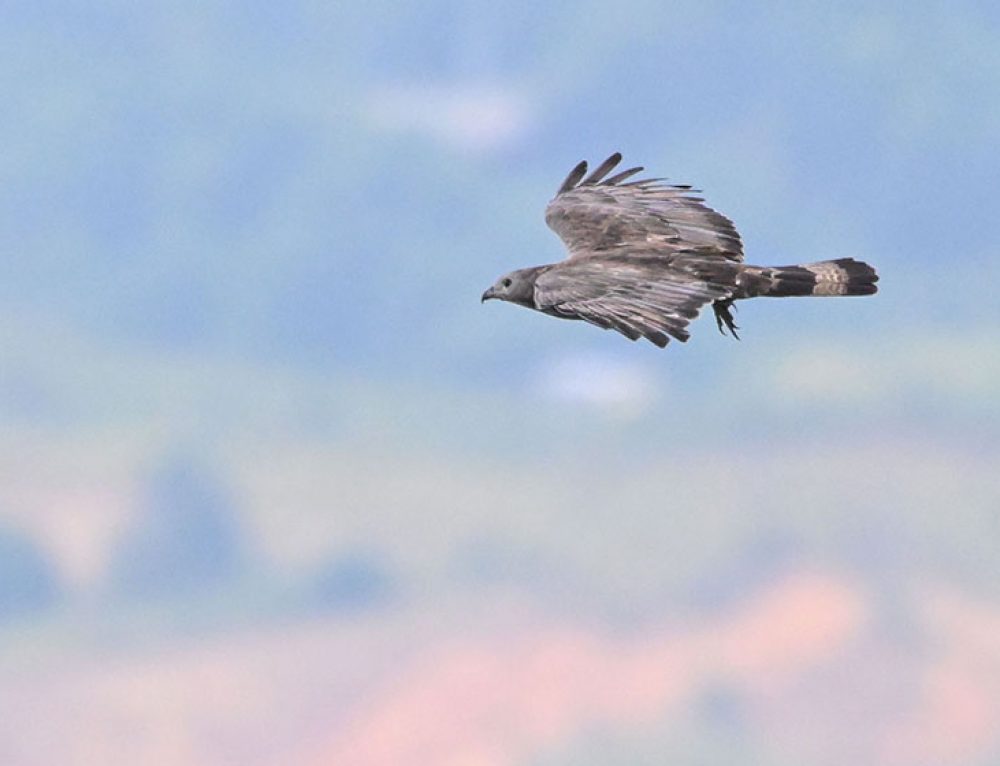Every autumn, Georgia becomes the place of one of the most spectacular sights on Earth. Originating from the vastness of Eastern Europe and Western Siberia, raptors and many other species of birds plot their route to wintering grounds through the eastern coast of the Black Sea and the lush forests of the Lesser Caucasus Mountains, densely concentrated in one narrow flyway, known as the Batumi Bottleneck in Western Georgia, which is not wider than 10 kilometers. Migration highlights two main features; shocking figures and stunning diversity. Up to 35 different species of raptors have been recorded here, with a stable seasonal reach of more than 1,000,000 birds. (Click here to see BRC’s migration count totals). Such a high turnover of raptors undoubtedly makes Batumi one of the largest migration hotspots on the planet and, respectively, one of the best places to witness this outstanding show worthy of admiration. Our full seven-day tour takes place during its most piquant period. This is the best time to observe the impressive flights of various charismatic eagles, including Lesser and Greater Spotted, Steppe, Eastern Imperial, Short-toed and Booted! Moreover, there are still plenty of European Honey Buzzards around, as well as Black Kites and other species of birds of prey, but the bulk of the migration is now made up of Steppe Buzzards, and during this period we expect another peak day of the season, when up to 100,000 raptors or more can pass through on a single day! Levant Sparrowhawk is another numerous guest during this period, while Red-footed Falcons will definitely add more spice to this week, as will several beautiful male Pallid Harriers. Obviously, the first reason to join this tour is the charming eagle migration, and everything else is just an integral part of this week, including a number of other quality birds offered during regular excursions to other popular birding sites known in the region.
Mighty Eagles Week
A seven-day birdwatching tour to Batumi, Georgia
4 – 14 October 2025

Since the eagle migration is a priority, we will spend most of the tour at two main vantage points located in two different villages not far from each other. The closest to the town is situated on a hilltop above the coastal village of Sakhalvasho. This is an amazing place with stunning views of both Batumi town in the south and the Greater Caucasus Mountains in the north. It overlooks the sea and the botanical garden on one side, and broad-leaved mixed forest of the Colchic Mountains on the other side. Its privileged location between the coast and the mountains as the highest point in the landscape, and exactly where the Lesser Caucasus hit the sea, make this an exceptional place to watch raptors and other soaring birds migrating through the bottleneck at its narrowest point. Shuamta Raptor Watchpoint is situated in the middle of forest hills, on a ridge above a tiny village bordering the UNESCO-listed Mtirala National Park, which literally means ‘crying’ referring to the high annual rainfall in the area. The migration here is remarkably different. At this time of a season this is usually a better place for a number of species preferring a more easterly migration route, and eagles, as a rule, pass over this station in greater numbers, but Sakhalvasho also has some specialties. For example Red-footed Falcons are almost exclusively seen here. Very enjoyable are also the European Bee-eaters, with thousands and thousands passing through, filling the sky with their purring sounds. And then there are the European Rollers, displaying their colorful wings when flying over the watchpoints in small flocks, or Black Storks wheeling in a blend of raptor kettles. When the passage calms down for a moment, we can always go for a stroll in the lush forests around us. Here we can find various woodpeckers, Green Warbler, Red-breasted Flycatcher, samamisicus subspecies of a Common Redstart and other little birds.
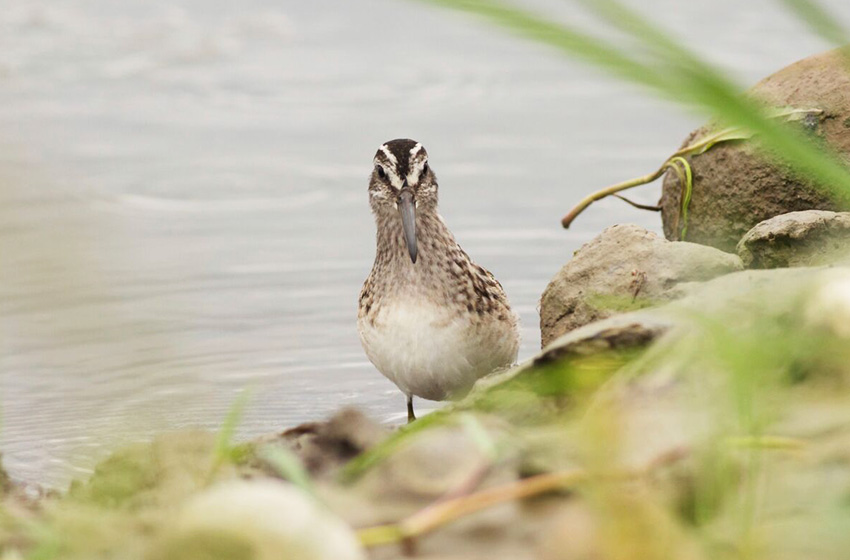
The rest of the tour will be devoted to exploring other hotspots along the coast. Since Batumi is located on the main migration artery, there are many potentially promising places that are worth visiting repeatedly on different days of this week. One of these is the famous Chorokhi River Delta south of Batumi, which has proven to be an excellent birding spot due to its high variety in biotopes. Perhaps during this period the diversity is not as great as at the height of the migration season in mid-September, but this week has its own peculiarities. All the heronry is still regularly observed in the marshes, including Squacco and Purple, and we may also expect to see Glossy Ibis, Grey-headed Swamphen, Little Bittern and Little Crake, and possibly also Spotted and Baillon’s, if we are very lucky. Almost the entire stretch of the pebble beach is occupied by gulls and terns, and the mudflats at the seaside are a reliable spot for waders, but the best place is yet to be visited later. The reedbeds can offer various habitat-associated warblers, including Moustached, while in the bushy areas surrounding marshes and ponds, where raspberries and buckthorn predominate, both Red-backed and Lesser Grey Shrikes, Barred Warblers, Ortolan Buntings, and a number of other passerine birds are sighted regularly. The meadows often hold Eurasian Hoopoes, small flocks of Greater Short-toed Larks, both Western Yellow and Citrine Wagtails, Tawny Pipits and so on. Now is also the right time to conduct a little quest for Richard’s Pipit. Other fine observations this week of October may include hemprichii and variegatus subspecies of Siberian Stonechat along with other species of more eastern origin. Without placing high expectations, however, this period of the season is quite favorable for rare and vagrant species, and we will not be surprised of a lucky encounter, for example, with a Sardinian Warbler or Isabella Shrike. Speaking of passerines, another must is the Batumi Boulevard, especially on rainy days, when birds are forced to pause their migration, even the smallest bushes and grassy patches are heaving with birds, and we are never far from a nice café if it starts pouring down. Apart from a vivid selection of ordinary, or predicted migrants, to be more precise, sightings may also involve some splendid birds. A good example would be the mention of Yellow-browed and Pallas’s Leaf Warblers. And, there is always a possibility for additional highlights, such as Corncrake, or any other stunners migrating through this part of the world. One of the excursions is foreseen at the botanical garden, notorious for its Krueper’s Nuthatches.
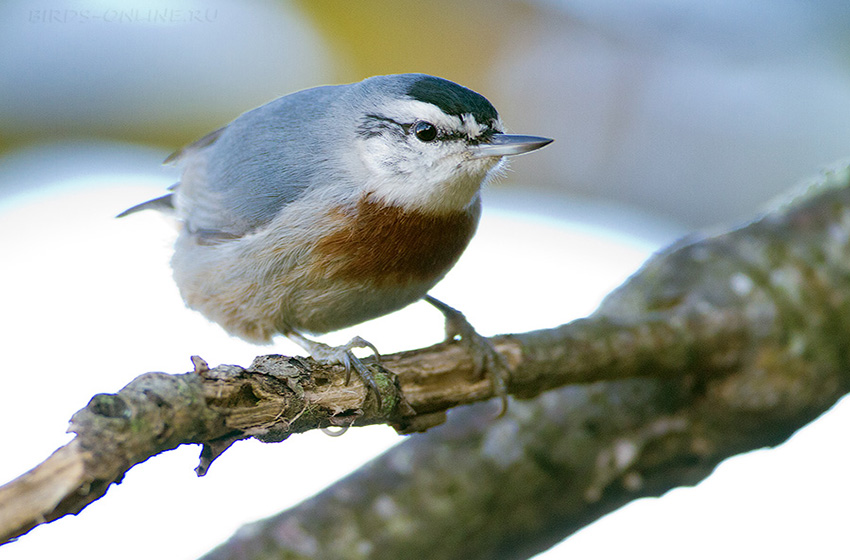 The program would be incomplete without visiting Matlakva Beach, a place of another special interest for us. This short stretch of sand spit with a length of no more than two kilometers, opposite the modern Kolkheti National Park, once a geographic center of historical ‘Colchis’, well known from the Hellenistic legend ‘Jason and the Argonauts’, attracts a surprisingly rich array of shorebirds – almost all species found in the Western Palearctic, not to mention the rarities that appear annually. Although the season has almost come to an end, the chances of spotting Broad-billed, Terek and Marsh Sandpipers, and-or virtually anything among a mixed party of different waders foraging or just roosting along the shore, are still pretty high. In addition, it is a great place for terns, numbering up to eight species. Birding on this beach can easily lead to very close encounters with Gull-billed, Caspian and White-winged Terns. By the way, mentioning another historical fact can only expand your ornithological knowledge about this place: The combination of the ancient Greek names of the site (modern Kolkheti, formerly Colchis) and the river (modern Rioni, formerly Phasis) makes up the Latin (and English) names for Common Pheasant (Phasianus colchicus) that is thought to have been introduced to Europe by Argonauts from the site.
The program would be incomplete without visiting Matlakva Beach, a place of another special interest for us. This short stretch of sand spit with a length of no more than two kilometers, opposite the modern Kolkheti National Park, once a geographic center of historical ‘Colchis’, well known from the Hellenistic legend ‘Jason and the Argonauts’, attracts a surprisingly rich array of shorebirds – almost all species found in the Western Palearctic, not to mention the rarities that appear annually. Although the season has almost come to an end, the chances of spotting Broad-billed, Terek and Marsh Sandpipers, and-or virtually anything among a mixed party of different waders foraging or just roosting along the shore, are still pretty high. In addition, it is a great place for terns, numbering up to eight species. Birding on this beach can easily lead to very close encounters with Gull-billed, Caspian and White-winged Terns. By the way, mentioning another historical fact can only expand your ornithological knowledge about this place: The combination of the ancient Greek names of the site (modern Kolkheti, formerly Colchis) and the river (modern Rioni, formerly Phasis) makes up the Latin (and English) names for Common Pheasant (Phasianus colchicus) that is thought to have been introduced to Europe by Argonauts from the site.
At the end of this tour, between the 10th and 12th of October, we aim to organize a short 3-day extension trip to the fabulous mountain region of Svaneti, where, in addition to being the gateway to the atmosphere of antiquity, all the endemic birds of the Caucasus are found. Caucasian Snowcock and Caucasian Grouse are the main purpose and the targets of the trip, however the wishlist doesn’t end here. There are always good chances for other eminent alpine highlights, such as Great Rosefinch, Güldenstädt’s Redstart, Mountain Chiffchaff, Twite, Alpine Accentor, Horned Lark and Red-fronted Serin. Although participating in this tour is more of your choice than an obligation, it is a great opportunity to combine the two into one. A huge advantage of this tour, among other things, is the access road taking us to the desired destination at an altitude of more than 3000 meters – the elevation where major birding is done.
For additional information about this tour, please send us an email at info@birdingcaucasus.com
Photo credits
- Lesser Spotted Eagle (homepage) by Ilya Ukolov
- Raptors (tour header) by Aki Aintila
- Broad-billed Sandpiper (tour overview) by Albert de Jong
- Krüper’s Nuthatch (tour overview) by Ilya Ukolov
- Flock of birders (tour header) by Giorgi Beridze
Batumi Raptor Count, Batumi Birding, Batumi Raptor Watch, Batumi Raptors, Bird Migration, Raptor Migration, Chorokhi Delta, Chorokhi River Delta, Batumi Eagle Week, Batumi Birdwatching Festival, Batumi Eagle Festival Week, Birding Georgia, Birding Caucasus, Birding Azerbaijan, Birding Armenia, Birding Turkey, Birding Georgia Tours, Georgia Bird Watching Holidays, Tours for Conservation in the Caucasus, Guesthouses Sakhalvasho, BRC Sakhalvasho Raptor Watchpoint, Sakhalvasho Watchpoint, BRC Shuamta Raptor Watchpoint, Shuamta Watchpoint

